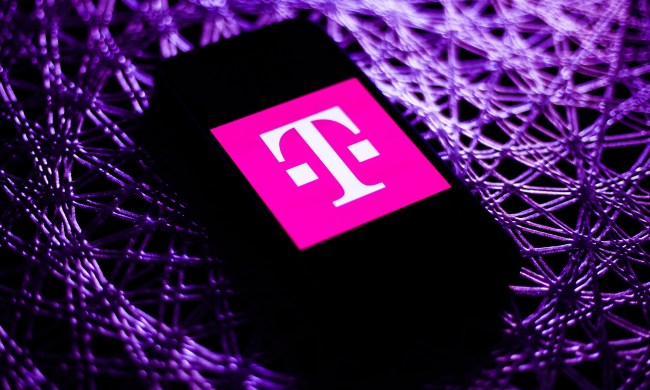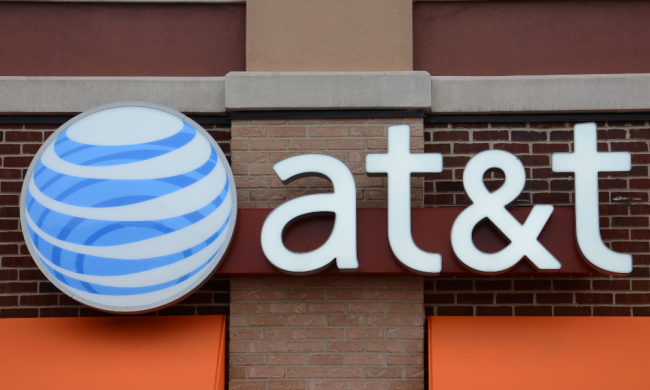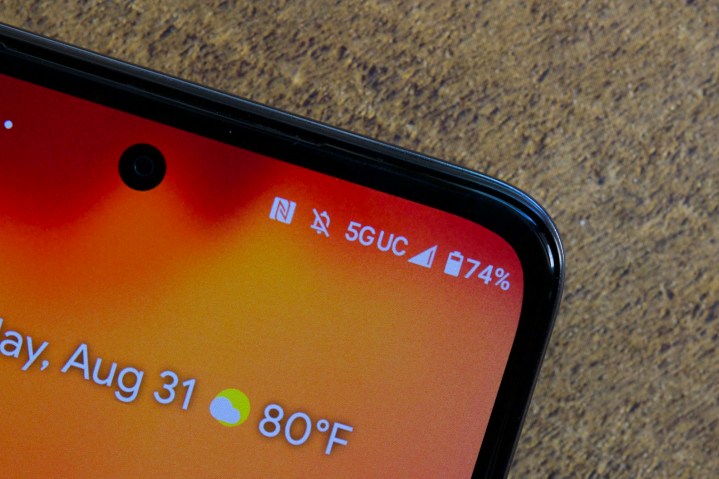
After a year or two of steady growth in 5G performance among the big three U.S. carriers, things seemed to level off in 2023, with reports showing mostly incremental improvements each quarter.
However, it seems that the underdogs took a big leap forward in the last three months of the year. According to Ookla’s latest market research, Verizon and AT&T showed 5G speed increases of over 20% from the prior quarter — a change that’s resulted in Verizon significantly narrowing T-Mobile’s longstanding lead.
That’s not to say that T-Mobile doesn’t still command a healthy lead. The “Un-carrier” also saw a measurable increase in 5G speeds compared to the last time, but there’s little doubt that Verizon is starting to catch up.
Verizon closes the gap

While T-Mobile’s numbers mostly plateaued last year, rivals Verizon and AT&T showed a burst of growth over the summer that now appears to have been more than a one-off.
After crossing the 200Mbps line in January, T-Mobile leveled off, showing only modest increases that ran from 216.56Mbps in April’s report covering the first quarter of 2023 to 221.57Mbps in October.
During the first half of 2023, T-Mobile clocked in with 5G speeds that were 65–70% faster than those of its closest rival, Verizon. However, that gap narrowed significantly in the third quarter, dropping to 44% after Verizon showed a burst from 133.50Mbps to 153.79Mbps — a 15% increase in speeds.
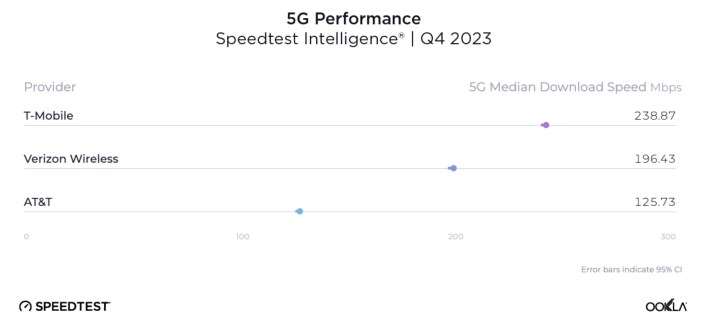
Now, it appears that wasn’t a one-time event. Verizon has just taken an even greater leap forward in the fourth quarter, with Ookla’s latest report showing the carrier is now toeing the 200Mbps barrier with median 5G speeds of 196.43Mbps. That’s a staggering 27.73% increase in performance — the likes of which we haven’t seen since the carrier first rolled out its faster C-band network in early 2022. It’s also nearly double the jump we saw in October.
More significantly, this puts Verizon closer to T-Mobile than it’s ever been in the history of the 5G speed race. While T-Mobile also saw a nearly 8% increase in performance, moving the needle up to 238.87Mbps from its year of relatively flat 200Mbps numbers, Verizon’s jump means it now only commands a 21.6% lead. If this trend continues, we could see Verizon catching up by the end of this year.
AT&T isn’t standing still
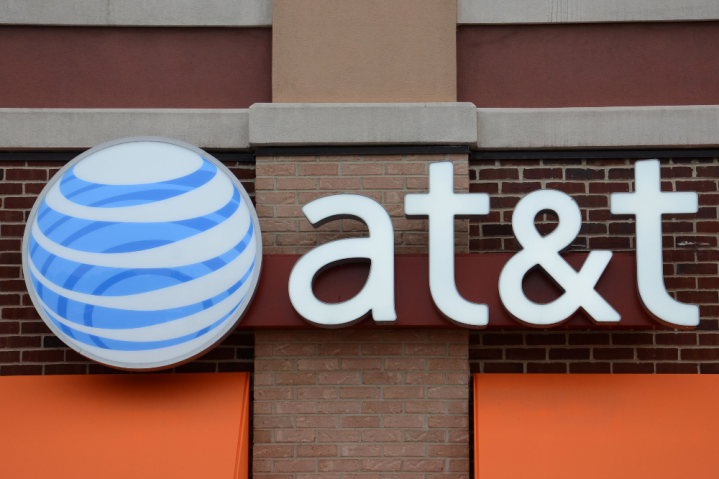
While Verizon is now in a very solid second place, AT&T also saw some healthy gains, continuing its growth at a more steady pace. The third-place carrier broke the 100Mbps barrier for the first time in October after an 18% jump from 86.01Mbps in the second quarter to 101.55Mbps in the third.
While it’s not scaling up its growth quite the same way Verizon has, AT&T still gained nearly 24% in speeds in the last quarter of 2023, putting it at 125Mbps. To put that in context, that’s not far off from the 127.95Mbps speeds that Verizon was boasting at this time last year.
Better coverage is leading to faster speeds
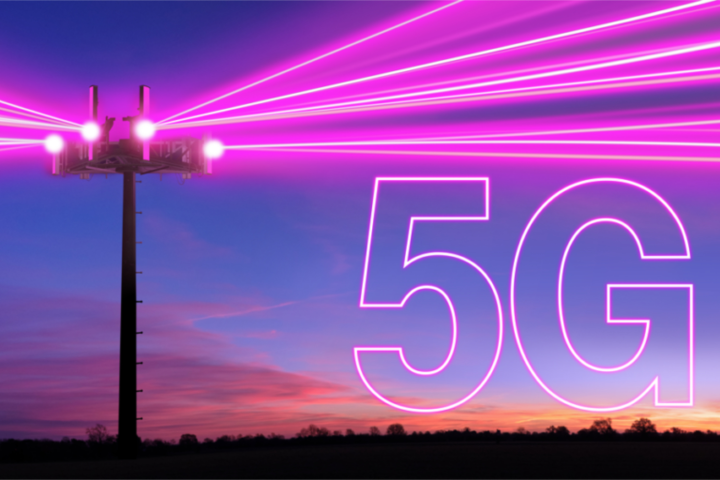
Barring significant advances in 5G technology by T-Mobile, it’s inevitable that Verizon and AT&T will eventually catch up as they continue expanding their mid-band 5G networks.
After all, it’s not that raw 5G speeds are increasing. The numbers in these reports are median speeds across the United States, which means they don’t reflect maximum 5G performance in any single area — and they certainly don’t represent the best 5G speeds that each carrier has to offer.
The median numbers show how far and wide midband 5G networks have expanded; these numbers increase as more folks can access the fastest 5G speeds rather than being left on the much slower low-band 5G networks initially used to deliver nationwide 5G.
The higher scores that T-Mobile has consistently achieved over the past few years came from its enormous lead in this area. Thanks to its 2020 merger with Sprint, T-Mobile inherited a solid chunk of mid-band spectrum that it could deploy relatively quickly. This ultimately became its 5G Ultra Capacity (5G UC) network, which was up and running to more than 200 million T-Mobile customers over a year before Verizon and AT&T could get their hands on similar spectrum.
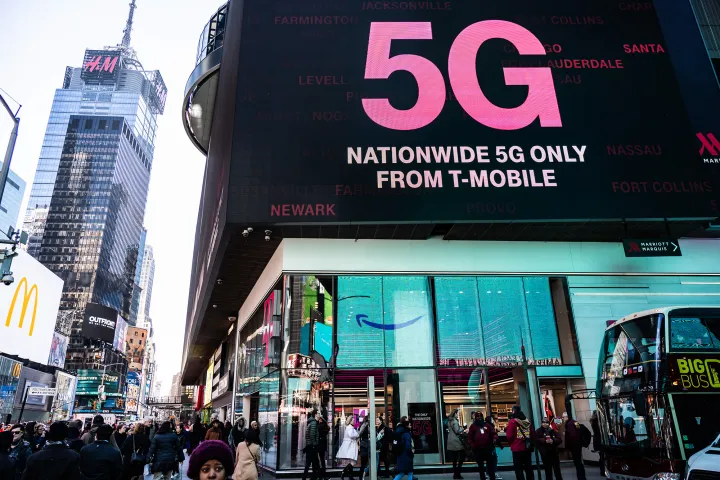
However, T-Mobile’s relative lack of growth throughout most of 2023 showed that it’s reached peak 5G coverage. That wasn’t surprising as the carrier had promised its 5G UC network would cover over 300 million people, or 90% of the U.S. population, by the end of 2023. The most recent 7% increase is likely the result of that final burst of expansion.
On the flip side, Verizon and AT&T have much more room for growth. In early 2023, Verizon announced its faster 5G Ultra Wideband (5G UW) network had reached over 200 million people — and it planned a big push to grow its 5G UW network into rural areas.
That push appears to have paid off for Verizon, and while T-Mobile is now working on bleeding-edge 5G technologies like six-carrier aggregation, it’s starting to look like Verizon may catch up sooner than we thought.
However, another aspect of Ookla’s report suggests that things may not be all sunshine and roses for Verizon and AT&T customers. While median 5G speeds are better than ever across the board, overall median download speeds — those measured across both 4G/LTE and 5G networks — tell a different story.
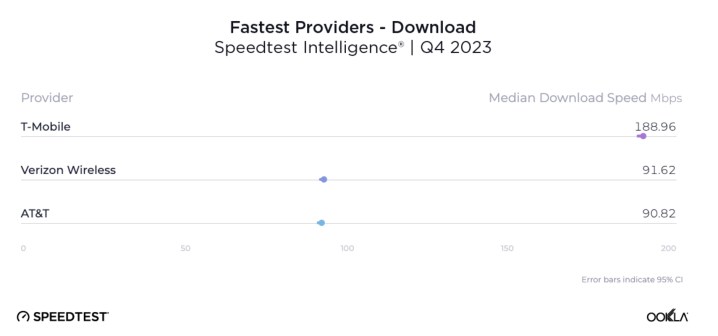
Specifically, Verizon and AT&T still fall significantly behind T-Mobile, with median download speeds coming in at less than half of the 188.96Mbps median speeds that T-Mobile’s customers are seeing.
Verizon and AT&T are roughly tied here, at 91.62Mbps and 90.82Mbps, respectively. This significant gap between those 5G speeds and overall speeds suggests that more Verizon and AT&T customers are finding themselves on 4G/LTE networks in places where 5G coverage isn’t available.
In other words, while Verizon and AT&T are rapidly rolling out their midband 5G networks, they don’t seem to be doing much to bring even low-band 5G service to underserved areas. T-Mobile customers are more likely to find at least some form of 5G coverage everywhere they go, which isn’t surprising since T-Mobile’s low-band Extended Range 5G network covers over 98% of the U.S. population.
The numbers by state
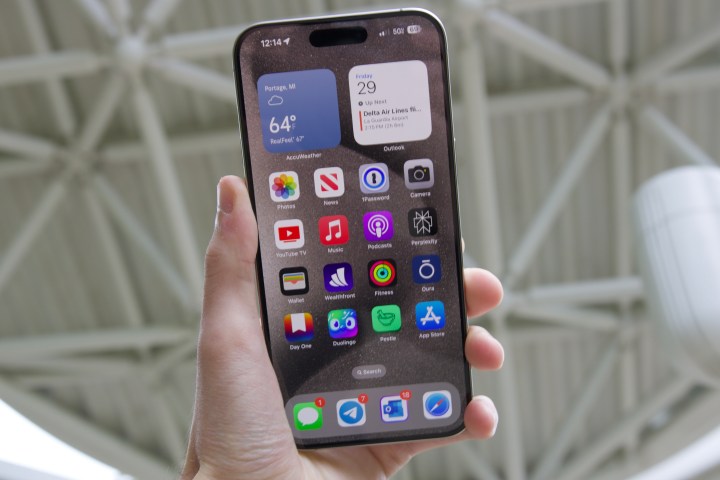
Ultimately, getting the best cellular network performance will entirely depend on where you live. Median download speeds indicate how much more likely you are to get the best possible speeds on each carrier, but they don’t tell the whole story.
The good news is that Ookla breaks down performance numbers by state and major U.S. cities. While it’s perhaps unsurprising, considering its overall increase, Verizon now comes out on top in the second-fastest state of North Dakota, which also saw a jump from its seventh-place 97Mbps score in October.
In fact, the ten fastest U.S. states have all blown past the 100Mbps line for the first time, with significant speed increases across the board. Illinois remains on top after taking first place last quarter, but it also jumped from 110Mbps to 138.89Mbps overall and 199.47Mbps on T-Mobile.
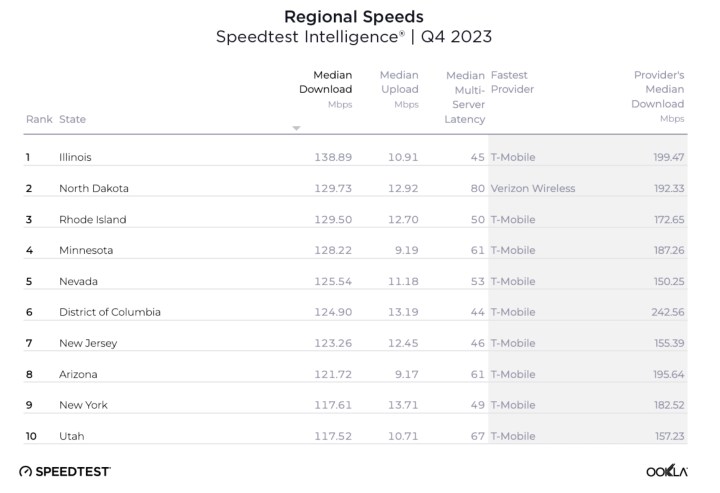
That’s followed by North Dakota, which was vaulted to second place by Verizon, clocking in at 129.73Mbps across all carriers but 192.33Mbps for Verizon customers in that state.
The District of Columbia, previously in third place, dropped to sixth, but not for lack of trying. Speeds there still increased from 100.83Mbps to 124.9Mbps — and T-Mobile customers in D.C. saw download speeds of 242.56Mbps, which were the highest in any state. However, D.C. was still edged out by Minnesota, which dropped from second place to fourth. Rhode Island also made a huge comeback into third place after dropping off the top ten list in October, and Nevada joined that elite speed club for the first time, landing in fifth place.
What’s even more significant is that the top 16 states with the fastest median download speeds all scored higher than the fastest state in October’s report. Pennsylvania was in 16th place at 111.7Mbps, putting it slightly ahead of Illinois’ 110.08 Mbps October score. In total, median download speeds of over 100Mbps were measured in 26 U.S. states.
While Verizon’s win in North Dakota is remarkable, it’s also been a hotly contested state for overall download speeds, often flipping between T-Mobile, Verizon, and undecided. There’s little doubt that Verizon’s growth propelled it to second place, but it’s also the only state that Verizon took. T-Mobile came out ahead in 46 states and the District of Columbia, while regional carrier GCI reclaimed the top spot in Alaska, and South Dakota and Vermont were both too close to call. However, undecided states Maine and Montana flipped to T-Mobile this time.
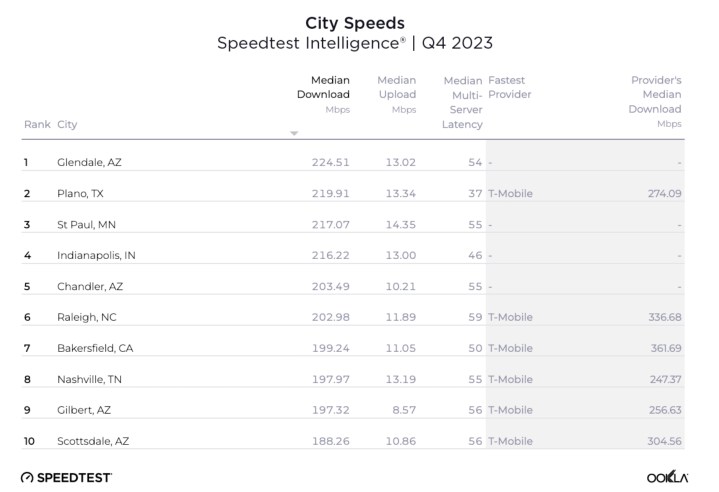
There was less movement in city rankings this time. Glendale, Arizona, and Plano, Texas, remained in the top two slots, while Indianapolis, Indiana, was bumped to fourth place by St. Paul, Minneapolis. However, as with the state scores, every city on the list saw a substantial speed increase, with the top six breaking 200Mbps. Glendale jumped from 181.74Mbps to 224.51Mbps, and the top 17 cities all came in above its October speeds; Columbus, Ohio, dropped to that 17th slot but still saw an increase to 183.57Mbps from the 153.78Mbps score that put it in seventh place in October.
However, the city rankings may best reflect how far Verizon has come in catching up. While T-Mobile was the undisputed leader in nine of the top 10 cities in October, this time, even first-place Glendale had no clear winner that could be statistically verified. The same was true for 28 other cities on the top 100 list. T-Mobile still took 67 of the top 100, while Verizon came out in first place in only three — Irvine, California, Miami, Florida, and El Paso, Texas — and AT&T had the lead in Pittsburgh, Pennsylvania.

